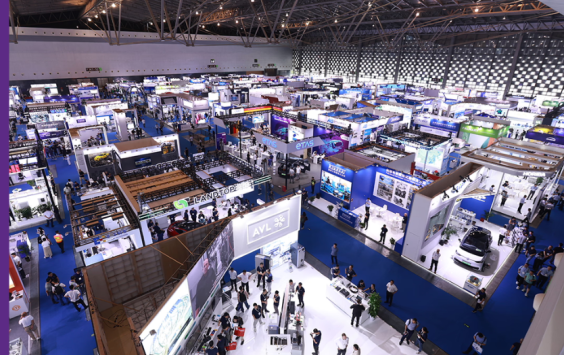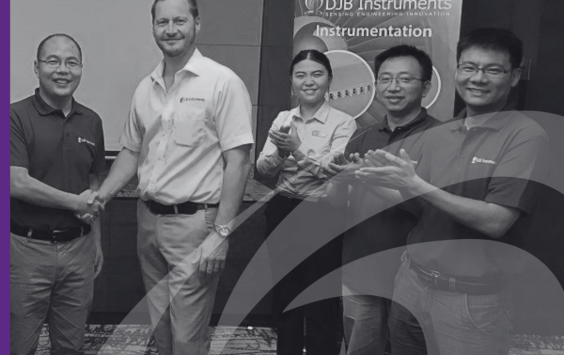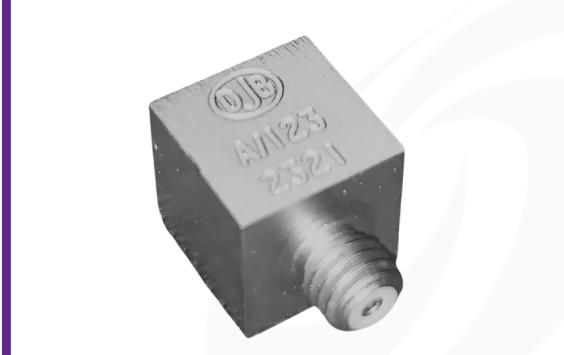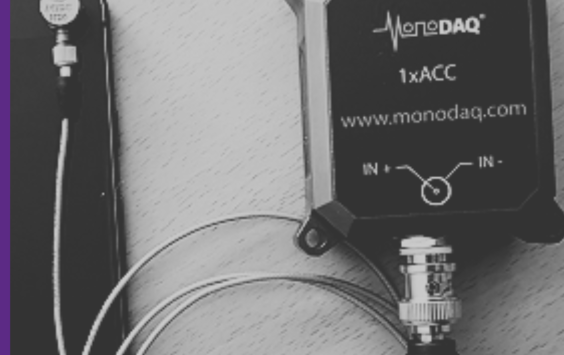Understanding accelerometer types
When selecting an accelerometer, one of the key decisions is whether to use an IEPE (voltage output) or charge output model. Each type has advantages and limitations depending on your test conditions, temperature range, and measurement setup.
This guide outlines the pros and cons of both sensor types to help you make an informed choice.
IEPE Accelerometers (Voltage Output)
IEPE accelerometers contain integrated electronics that convert the raw charge signal into a stable voltage signal before it leaves the sensor. This makes them less prone to signal noise and easier to use with standard data acquisition systems and coaxial cables.
Typical temperature range: Up to 125°C (185°C for high-temperature variants; 900°C with DJB’s water-cooled solution)
Key advantages
- Compatible with most DAQ systems
- No external charge amplifier required
- Simpler cabling with standard coaxial cables
- Longer cable runs without added noise
- Integrated electronics can boost the signal from small sensors
- Less sensitive to dirt or contamination at connectors
- Often lower system cost due to built-in signal conditioning
Considerations/limitations
- Fixed sensitivity, range, and time constant
- Lower maximum temperature capability than charge types
- Internally more complex — higher per-unit cost
- Less robust in extreme environments
- Requires a constant current supply for stable operation
Charge Output Accelerometers
Charge output sensors generate a high-impedance signal directly from the piezoelectric element. They are better suited to high-temperature or harsh environments, but require low-noise cables and a charge amplifier to condition the signal.
Typical temperature range: Up to 250°C for test and measurement; 400°C for industrial sensors
Key advantages
- Excellent high-temperature performance
- Greater flexibility (time constant, gain, filtering all set externally)
- Lower cost per sensor unit
- Extended low-frequency response
- Wide dynamic range
- Robust construction
Considerations/limitations
- Sensitive to noise from cable motion (must use low-noise cables)
- More costly system setup (amplifiers and special cables)
- High-impedance signals are more susceptible to interference
- Requires more expertise to operate and maintain
- Dirt or damage to the connectors can compromise signal integrity
- Cable length can significantly affect signal quality
Summary: Which type should you choose?
| Feature | IEPE Accelerometers | Charge Output Accelerometers |
|---|---|---|
| Ease of use | Easier setup | ⚠️ Requires more expertise |
| Temperature range | Up to 185°C (900°C with cooling) | Up to 400°C |
| Signal conditioning | Built-in | Requires external charge amp |
| Cable requirements | Standard coaxial | Must use low noise cable |
| Robustness | Moderate | High |
| Flexibility | Fixed gain and range | Adjustable via charge amp |
Need help selecting the right sensor for your application?
Whether you're working in extreme conditions or want to optimise data accuracy, DJB's team can help guide you to the best accelerometer for your needs.
Contact our experts or call us on +44 (0)1638 71 22 22

Dive into DJB’s growing library of expert-written resources, including technical articles, selection guides, and in-depth explainers on accelerometers, cables, and signal conditioning.
Whether you’re specifying new sensors or troubleshooting complex setups, our content is designed to support your success.






